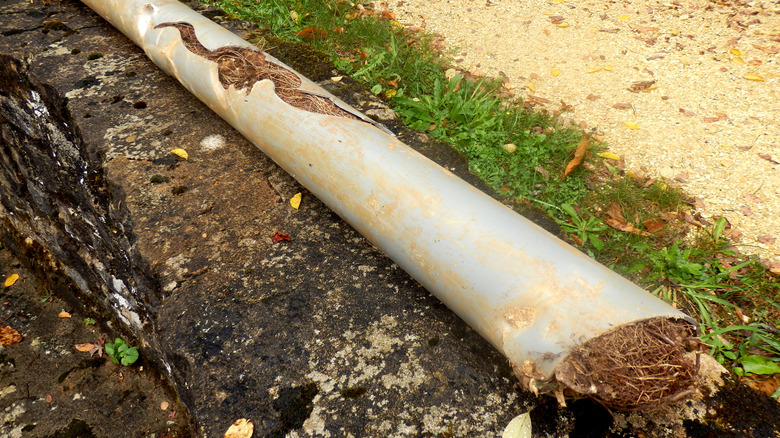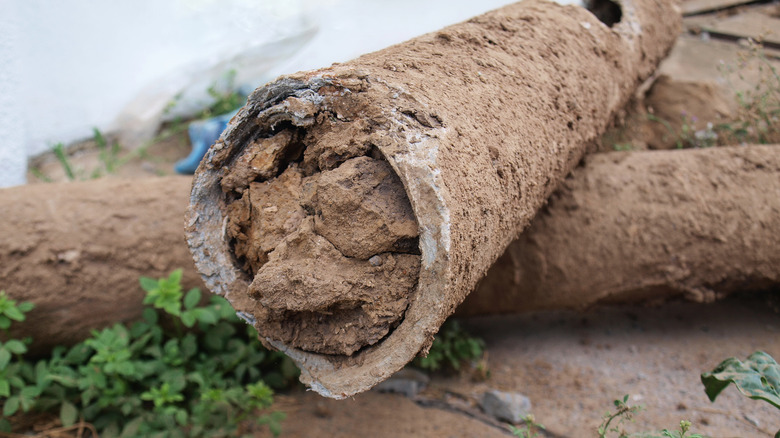Water Line Pipes That Are Most Vulnerable To Invasive Tree Roots
Are you worried that the trees on your property are invading the underground water lines? Sycamore, willow, and aspen trees are just some examples of invasive trees that could infiltrate your home's plumbing. The presence of one of these species should be particularly worrisome if your property is also home to two types of outdated pipes that are most vulnerable to damage caused by a tree root invasion — Orangeburg and clay pipes. Orangeburg pipes were popular in the immediate post-war period, spanning from the mid-1940s until the early 1970s, so they're still prevalent in mid-century homes. These pipes, named after their birthplace in Orangeburg, NY, are made of wood pulp pressed together with tar. Their flimsy composition leaves Orangeburg pipes susceptible to deformation caused by soil pressure. After roughly three decades in service, Orangeburg pipes begin to deteriorate significantly, and tree roots use this opportunity to invade them in their quest for water.
Clay pipes predate their Orangeburg cousins by several millennia. However, these pipes — many of which were laid down about a century ago — are still widely used throughout the U.S. Newer and stronger variants are also available, but generally, most clay pipes are susceptible to penetration by invading tree roots. Whether or not you know for sure that the pipes serving your home are Orangeburg or clay, read on below to learn how to keep root systems from damaging them.
How to keep tree roots from damaging underground water pipes on your property
A carefully planned landscaping design can help you avoid tree root damage. For one, don't plant tree species with aggressive roots known to damage underground pipes, such as willow, elm, maple, and poplar trees. Instead, choose alternatives with less invasive roots. For example, there are several poplar tree look-alikes that likely won't cause damage with their roots. Chemical and physical root barriers offer another way to reign in a trees' unruly roots.
However, even with preventative measures in place, you must learn to spot the symptoms that point to tree root problems. Low pressure when using faucets and showers is a huge red flag that tree roots have damaged the water supply lines. Likewise, clogged drains typically mean that the roots have invaded the sewer lines, especially if cleaning the home's drains often doesn't resolve the problem. Sewage smells and frequent toilet clogs are related symptoms of tree roots wreaking havoc on underground sewer lines. Cracks in the foundation are yet another symptom. Although this sign doesn't necessarily translate to tree roots inside pipes, it may mean that out-of-control tree roots are spreading on your property. Together, these observations warrant a professional assessment.
If you confirm that water pipes on your property are suffering from a tree root invasion, you'll have to kill the roots. Potassium chloride and sodium chloride are effective treatments that professionals may prescribe to eliminate the offending them. Of course, you'll also need to replace pipes that have suffered damage. If your property has Orangeburg or clay pipes, this may be a good time to upgrade them to a more robust pipe type.

